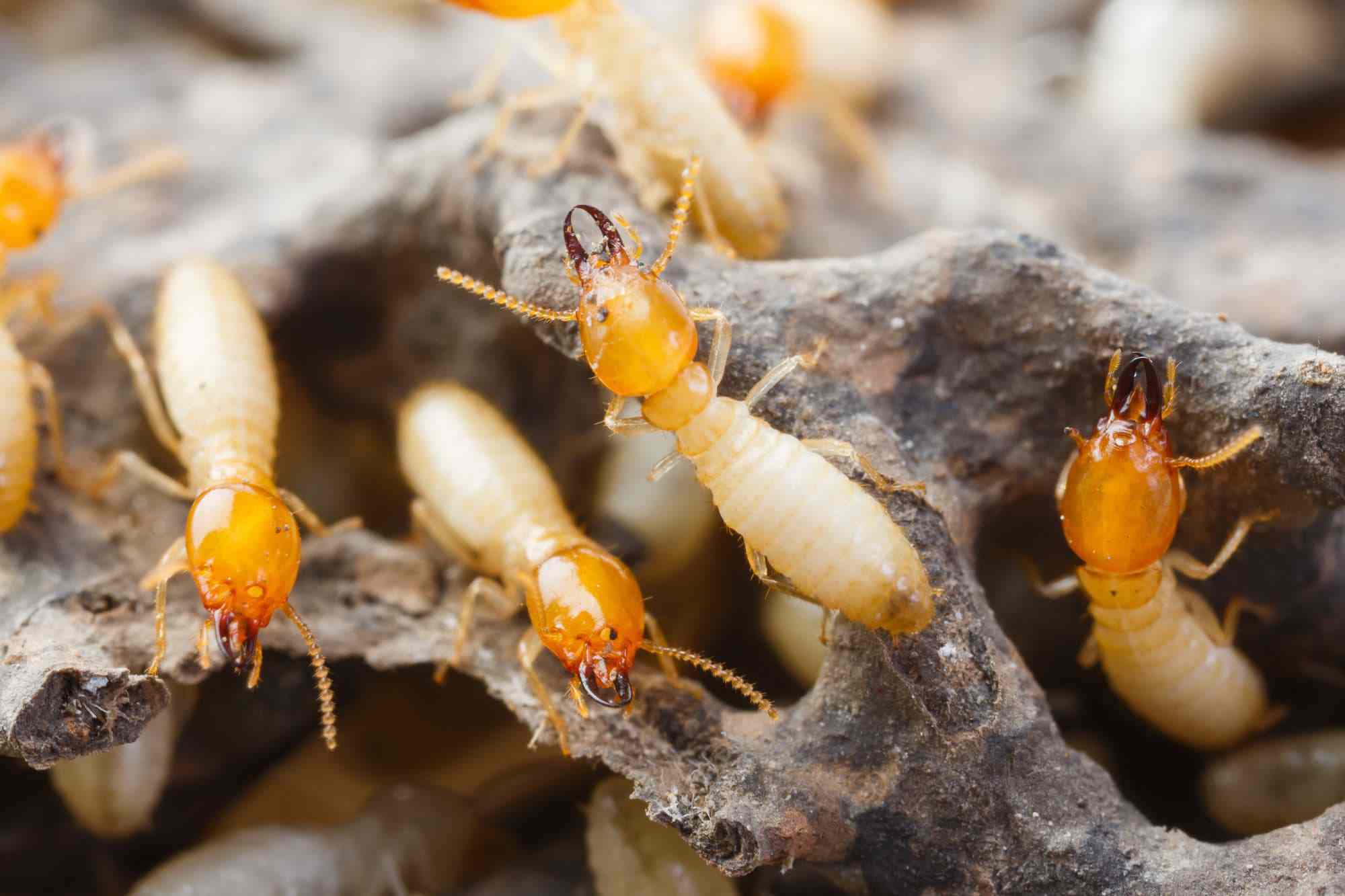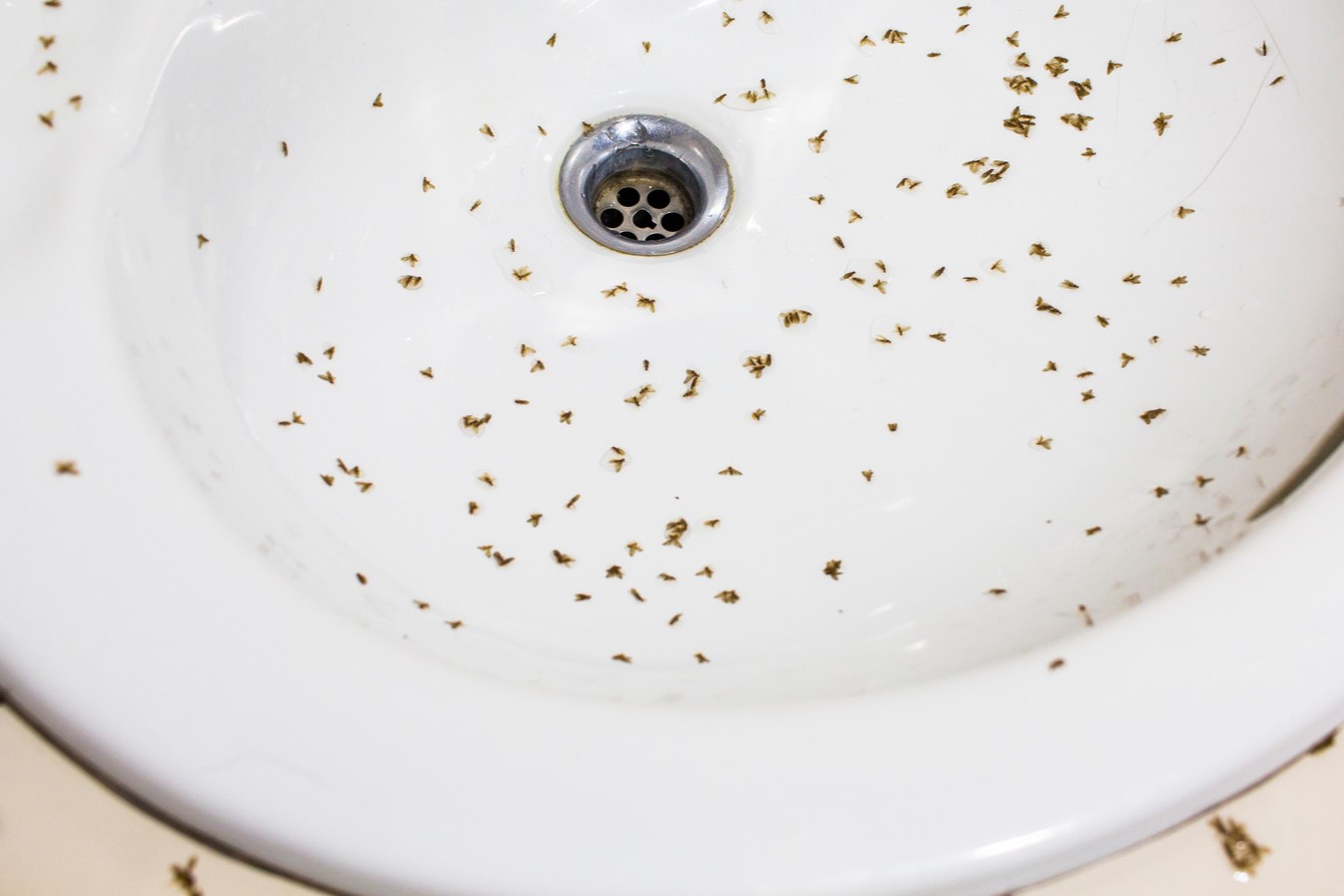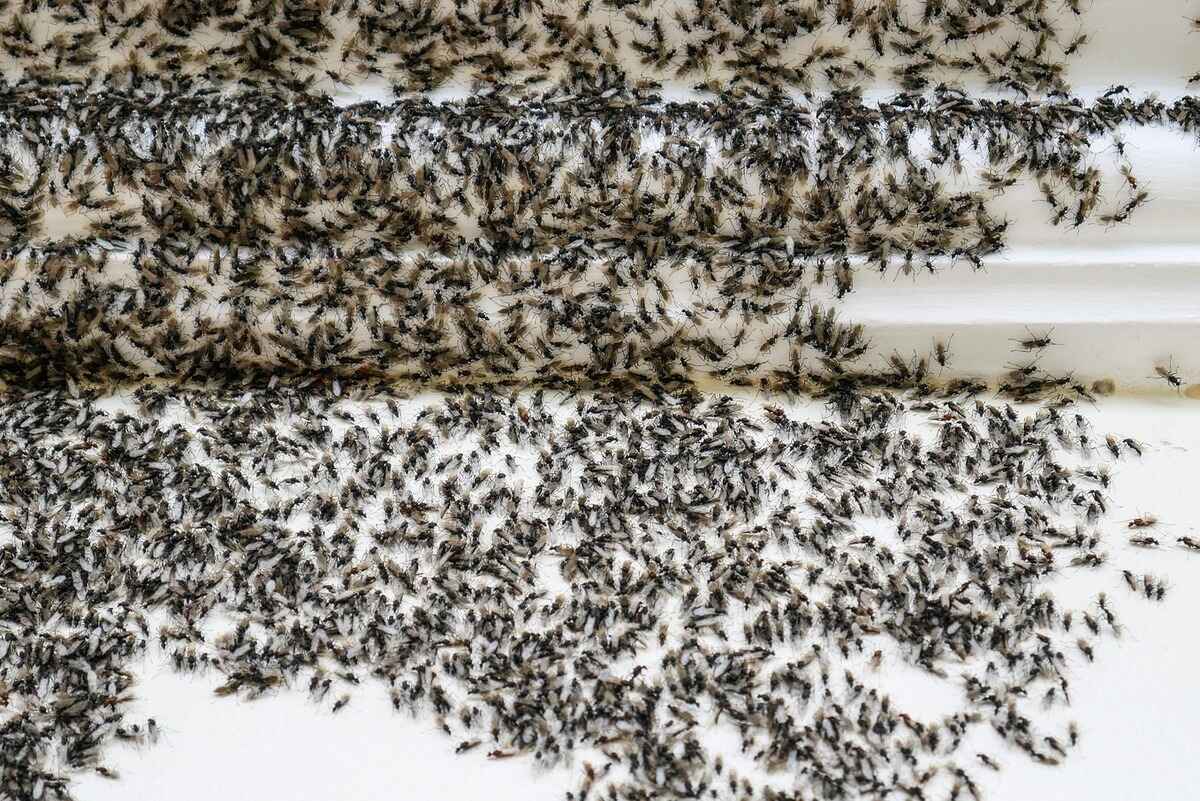Home>Home and Garden>Say Goodbye To Spiders In Your Home – Effective And Pet-Friendly Solutions!


Home and Garden
Say Goodbye To Spiders In Your Home – Effective And Pet-Friendly Solutions!
Published: February 8, 2024
Discover effective and pet-friendly solutions to eliminate spiders from your home with our expert tips and products. Transform your living space with our home and garden solutions today!
(Many of the links in this article redirect to a specific reviewed product. Your purchase of these products through affiliate links helps to generate commission for Noodls.com, at no extra cost. Learn more)
Table of Contents
Introduction
Spiders are a common sight in many homes, and while some people may appreciate their role in controlling other pests, others are less welcoming of these eight-legged creatures. Whether you belong to the former or latter group, the presence of spiders in your living space can be a cause for concern. While most spiders are harmless, some species can pose risks to humans and pets. Understanding the types of spiders that may be lurking in your home and the potential dangers they present is essential for effective pest management.
In this comprehensive guide, we will delve into the world of spiders, shedding light on the most common species found in homes and the potential threats they pose. Additionally, we will explore pet-friendly solutions for controlling spiders, providing you with effective and humane methods to keep these arachnids at bay. Furthermore, we'll discuss natural remedies for preventing spider infestations, allowing you to maintain a spider-free environment without resorting to harsh chemicals.
By the end of this article, you will be equipped with the knowledge and strategies needed to bid farewell to spiders in your home, creating a safe and comfortable living space for you and your beloved pets. So, let's embark on this journey to conquer the spider invasion and reclaim your home!
Understanding Spiders
Spiders, belonging to the arachnid family, are fascinating creatures that play a crucial role in maintaining ecological balance by preying on various insects. These arthropods are characterized by their eight legs, fangs, and ability to produce silk. With over 40,000 known species worldwide, spiders exhibit a wide range of sizes, colors, and behaviors, making them a diverse and intriguing group of organisms.
One of the most distinctive features of spiders is their ability to spin silk. This remarkable substance is produced by specialized glands located at the rear of the spider's abdomen. Spiders use silk for various purposes, including building webs for catching prey, creating egg sacs for reproduction, and constructing retreats for protection. The versatility of silk enables spiders to adapt to different environments and hunting strategies, making them highly adaptable and successful predators.
Spiders are predominantly carnivorous, feeding on insects, other arachnids, and small vertebrates. Their hunting techniques vary widely among species, with some relying on intricate webs to ensnare prey, while others actively hunt and ambush their victims. This diversity in hunting behavior is a testament to the remarkable adaptability and evolutionary success of spiders as a group.
In addition to their hunting prowess, spiders are also known for their remarkable diversity in appearance. From the vibrant red hourglass marking of the black widow to the intricate patterns adorning the orb-weaving garden spider, spiders exhibit a stunning array of colors and patterns. This diversity not only serves as a means of camouflage and warning to potential predators but also adds to the aesthetic appeal of these arachnids.
Furthermore, spiders play a vital ecological role by controlling insect populations. By preying on pests such as flies, mosquitoes, and cockroaches, spiders contribute to natural pest control, reducing the need for chemical insecticides. This natural pest management service provided by spiders is particularly beneficial in agricultural settings, where they help maintain a balance in insect populations, thereby minimizing crop damage.
In summary, spiders are a diverse and essential component of ecosystems, contributing to pest control and displaying remarkable adaptations in hunting and survival strategies. Understanding the behavior and characteristics of spiders is crucial for effective pest management and fostering a greater appreciation for these intriguing arachnids.
Common Spider Species
1. Cellar Spider (Pholcidae)
The cellar spider, also known as the daddy long-legs spider, is a common sight in homes worldwide. Recognizable by its long, delicate legs and small body, this spider is adept at spinning irregular webs in dark and damp areas such as basements, cellars, and crawl spaces. Despite its spindly appearance, the cellar spider is a valuable ally in pest control, as it preys on a variety of insects, including mosquitoes and flies.
2. House Spider (Tegenaria domestica)
The house spider is a resilient arachnid often found in human dwellings. With its brownish color and characteristic chevron markings on its abdomen, the house spider constructs funnel-shaped webs in secluded areas such as corners, closets, and attics. While their presence may cause concern for some homeowners, house spiders primarily feed on common household pests, making them inadvertent partners in natural pest management.
3. Black Widow Spider (Latrodectus)
One of the most notorious spider species, the black widow, strikes fear due to its potent venom. Identified by its shiny black body and red hourglass marking, the black widow prefers dark, sheltered locations such as woodpiles, garages, and sheds. While its venom can be harmful to humans and pets, black widow spiders are generally non-aggressive and only bite when threatened. Prompt identification and professional removal are essential when encountering these venomous spiders.
4. Jumping Spider (Salticidae)
Known for their keen eyesight and agile movements, jumping spiders are small, compact arachnids with the ability to leap considerable distances. These curious spiders are characterized by their compact bodies, large front-facing eyes, and vibrant colors. While they are adept hunters, preying on a wide range of insects, jumping spiders are harmless to humans and pets, making them a fascinating and welcome presence in gardens and homes.
5. Wolf Spider (Lycosidae)
The wolf spider, named for its hunting prowess and nocturnal habits, is a robust and agile arachnid commonly found in outdoor environments. With their brown or gray coloration and swift movements, wolf spiders are skilled hunters, actively stalking and pouncing on their prey. While they may occasionally venture indoors, wolf spiders are generally harmless and serve as effective predators of pests in gardens and outdoor spaces.
Understanding the characteristics and behaviors of these common spider species is essential for effective pest management and promoting coexistence with these arachnids in residential environments.
Dangers of Spiders in Your Home
Spiders, while often misunderstood and misrepresented as dangerous creatures, can pose potential risks when their presence goes unchecked within residential spaces. While the majority of spider species are harmless to humans and pets, there are notable exceptions that warrant caution. Understanding the potential dangers associated with spiders in your home is crucial for safeguarding the well-being of your family and pets.
One of the primary concerns related to spiders in the home is the risk of venomous spider bites. Certain species, such as the black widow and brown recluse, possess venom that can cause varying degrees of harm to humans. The black widow's neurotoxic venom, for instance, can lead to symptoms ranging from localized pain and swelling to more severe systemic reactions. Similarly, the brown recluse spider's cytotoxic venom can cause tissue necrosis and systemic effects in some cases. While these encounters are rare, it is essential to exercise caution when handling items in secluded areas where these spiders may reside.
Additionally, for individuals with arachnophobia or a fear of spiders, the presence of these arachnids in the home can lead to heightened anxiety and distress. This psychological impact is a valid concern for many homeowners and underscores the importance of effective spider control measures to create a comfortable living environment.
Furthermore, the proliferation of spider webs in indoor spaces can detract from the aesthetic appeal of a home and create an impression of neglect. Unsightly cobwebs in corners, ceilings, and other areas can detract from the overall cleanliness and tidiness of the living space, potentially impacting the comfort and satisfaction of residents and visitors.
While the dangers associated with spiders in the home should not be overstated, it is essential to acknowledge and address potential risks through proactive spider control measures. By implementing effective strategies for managing spider populations and minimizing the likelihood of encounters with venomous species, homeowners can create a safer and more inviting living environment for themselves and their pets.
Understanding the potential risks associated with spiders in the home empowers homeowners to take proactive steps in mitigating these concerns, thereby fostering a sense of security and well-being within their living spaces.
Read more: How To Say Goodbye In Japanese
Pet-Friendly Solutions for Spider Control
When it comes to managing spider populations in your home, it's essential to prioritize pet-friendly solutions that effectively mitigate the presence of spiders while ensuring the safety and well-being of your beloved pets. Here are some effective and humane methods for controlling spiders in your living space:
1. Natural Repellents
Utilizing natural repellents such as essential oils can be an excellent pet-friendly approach to deter spiders from entering your home. Peppermint oil, tea tree oil, and citrus essential oils are known for their spider-repelling properties. By diluting these oils with water and spritzing them in areas where spiders are likely to lurk, such as corners, windowsills, and entryways, you can create an inhospitable environment for spiders without posing any harm to your pets.
2. Regular Cleaning and Decluttering
Maintaining a clean and clutter-free home is crucial for reducing spider habitats. Regular vacuuming, dusting, and decluttering minimize potential hiding spots for spiders and their prey. By staying proactive with household cleanliness, you can significantly diminish the likelihood of spider infestations while creating a healthier and more pleasant living environment for both your family and pets.
3. Pet-Safe Spider Traps
Opting for pet-safe spider traps and monitors allows you to capture spiders without endangering your pets. These traps are designed to attract spiders without using harmful chemicals or pesticides. Placing these traps in strategic locations where spiders are commonly spotted can help in reducing their populations without posing any risks to your furry companions.
4. Sealing Entry Points
Preventing spiders from entering your home is a key aspect of effective spider control. Inspect and seal any potential entry points, such as gaps around doors and windows, cracks in walls, and openings around utility penetrations. By fortifying these entry points, you can minimize the likelihood of spiders finding their way indoors, thus creating a pet-friendly barrier against these arachnids.
5. Outdoor Maintenance
Maintaining your outdoor spaces can indirectly impact spider populations inside your home. Trimming vegetation, clearing debris, and reducing outdoor lighting can deter insects that serve as prey for spiders. By minimizing the presence of prey, you can discourage spiders from establishing themselves in close proximity to your home, benefiting both your pets and your living environment.
By implementing these pet-friendly solutions for spider control, you can effectively manage spider populations in your home while prioritizing the safety and well-being of your pets. These proactive measures not only contribute to a spider-free living space but also promote a harmonious and pet-friendly approach to pest management.
Natural Remedies for Spider Prevention
Natural remedies offer an eco-friendly and pet-safe approach to preventing spider infestations in your home. By harnessing the power of natural ingredients and strategic practices, you can create an environment that is uninviting to spiders, effectively deterring them from taking up residence in your living spaces.
1. Vinegar Spray
Vinegar, particularly white vinegar, is a versatile and effective natural spider repellent. Its strong odor disrupts spiders' sensitive senses and deters them from entering treated areas. Simply dilute vinegar with water in a spray bottle and apply it to areas where spiders are likely to lurk, such as baseboards, window sills, and doorways. This simple yet potent solution serves as a natural barrier against spider intrusions.
2. Citrus Peels
Citrus peels, such as those from oranges, lemons, and grapefruits, contain natural compounds that spiders find displeasing. Placing citrus peels in strategic locations around your home, such as near entry points and in dark corners, can act as a natural deterrent, discouraging spiders from establishing their presence. Additionally, the fresh scent of citrus peels serves as a pleasant alternative to chemical-based repellents.
3. Diatomaceous Earth
Diatomaceous earth, a fine powder derived from fossilized algae, is a natural and pet-safe solution for controlling spiders and other pests. When applied in areas where spiders frequent, such as behind appliances and in cracks and crevices, diatomaceous earth acts as a desiccant, effectively dehydrating and ultimately eliminating spiders and other insects upon contact. This non-toxic approach provides long-lasting protection against spider infestations.
4. Essential Oil Sachets
Utilizing the aromatic power of essential oils, such as lavender, eucalyptus, and cedarwood, in sachets or pouches can help repel spiders while infusing your home with pleasant scents. These natural oils have properties that spiders find aversive, making them an effective and aromatic solution for spider prevention. Place these sachets in closets, drawers, and other enclosed spaces to create a spider-repelling barrier.
5. Seal Cracks and Crevices
Preventative measures, such as sealing cracks, gaps, and crevices in your home, play a crucial role in spider prevention. By meticulously inspecting and sealing potential entry points, you can significantly reduce the likelihood of spiders finding their way indoors. This proactive approach not only deters spiders but also contributes to energy efficiency and structural integrity.
By incorporating these natural remedies into your spider prevention strategy, you can create a pet-friendly and environmentally conscious approach to maintaining a spider-free home. These methods not only serve as effective deterrents but also contribute to a healthier and more sustainable living environment for you and your beloved pets.
Conclusion
In conclusion, the presence of spiders in your home can evoke a range of emotions and concerns, from the appreciation of their role in natural pest control to the apprehension regarding potential risks and unsightly webs. Understanding the behavior, characteristics, and potential dangers associated with spiders is essential for implementing effective pest management strategies while fostering a harmonious living environment for you and your pets.
By gaining insights into the diverse world of spiders, including common species found in homes and their ecological significance, homeowners can develop a greater appreciation for these arachnids while taking proactive measures to mitigate potential risks. Recognizing the valuable role spiders play in controlling insect populations underscores the importance of balancing pest management with the preservation of ecological balance.
Furthermore, prioritizing pet-friendly solutions for spider control is paramount in creating a safe and nurturing living space for your beloved pets. By embracing natural repellents, regular cleaning practices, and strategic preventive measures, homeowners can effectively manage spider populations without resorting to harsh chemicals that may pose risks to pets. This pet-friendly approach not only safeguards the well-being of pets but also promotes a sustainable and compassionate approach to pest management.
Incorporating natural remedies for spider prevention offers an eco-friendly and non-toxic alternative to traditional pest control methods. By harnessing the power of natural ingredients such as vinegar, citrus peels, and essential oils, homeowners can create an inhospitable environment for spiders while minimizing the impact on the ecosystem and the well-being of pets.
Ultimately, the journey to say goodbye to spiders in your home is one that encompasses a balanced understanding of these arachnids, a commitment to pet-friendly pest management, and a dedication to natural and sustainable practices. By embracing these principles, homeowners can create a living space that is free from the concerns associated with spider infestations, fostering a sense of comfort, security, and harmony for themselves and their cherished pets.
As we navigate the coexistence with spiders, let us strive to cultivate a deeper understanding of these fascinating creatures, implement humane and pet-friendly pest control measures, and embrace natural remedies that contribute to a healthier and more harmonious living environment. With these principles at the forefront, homeowners can bid farewell to spiders in their homes, welcoming a renewed sense of tranquility and well-being into their living spaces.










